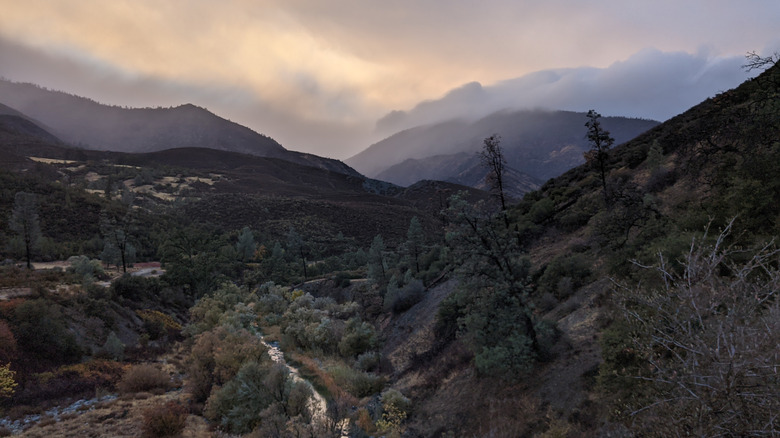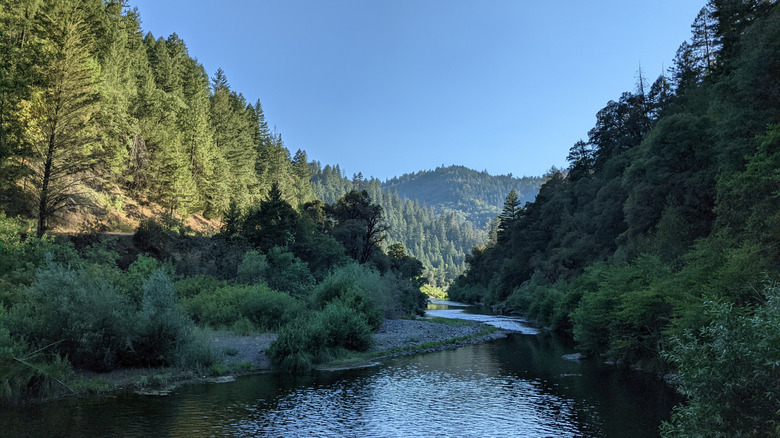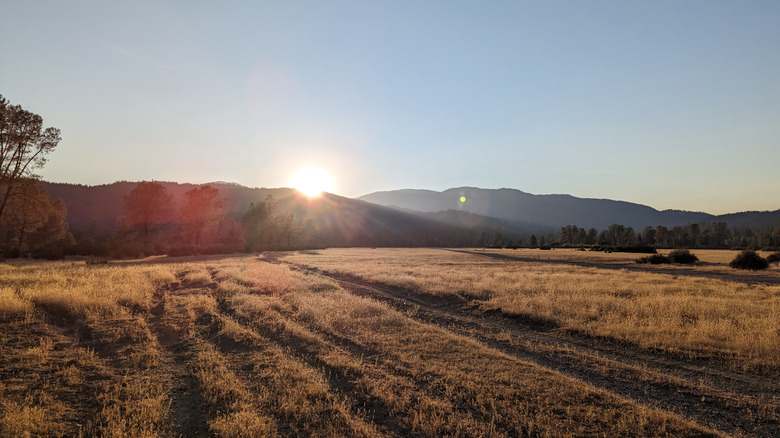California's National Forest North Of San Francisco Boasts Biodiversity, Wildlife, And Quiet Hiking Trails
Hear the name Mendocino, and you might first think of the New England-style beach town on the northern coast of California. But in fact, sprawling Mendocino County covers nearly 4,000 square miles of land, stretching across over 100 miles of scenic coastline, rugged hills and mountains, and ultimately, a forest so beautiful that President Obama declared it a national monument in 2015.
Mendocino National Forest has maintained its secluded and untamed wonder more than most in part because it's never been bisected by a major paved road or highway — so it's not a through-way for travelers headed elsewhere. Only visitors with intent visit these woods. At just around a three-hour drive north of the Bay Area, it's an easy weekend getaway for northern Californians, but thanks to the tremendous biodiversity that covers its nearly 1 million acres, it's worth an even longer stay for those traveling from farther away. Visitors can enjoy landscapes ranging from rugged mountains and canyons to oak groves and incense-scented forests to flowering grasslands and meadows.
The forest's relative solitude also means hikers are that much more likely to spot native wildlife, including black bears, bison, and bald eagles, among many other species. It may not be as widely regarded as the popular Redwoods National Park and Shasta-Trinity National Forest to the north, but that's exactly what makes Mendocino National Forest such a tremendous treat.
How to explore Mendocino National Forest
The forest is made up of five wilderness areas, each with its own geographic thumbprint. The high-alpine Snow Mountain Wilderness is an important watershed point to the Sacramento River but is scarce in drinking water outside the rainy season. The Berryessa Snow Mountain National Monument below it is covered in rolling forested hillsides, panoramic ridgelines, and waterfalls. Yolla Bolly-Middle Eel Wilderness is home to creeks, rivers, and 8,000-foot-tall Mount Linn, the highest peak in the park. Sanhedrin Wilderness covers backcountry meadows, forests, and scrubland, perfect for experienced hunters. And finally, the Yuki Wilderness includes diverse oak and evergreen forests, full of wide rivers perfect for trout and salmon fishing.
The forest's many marked trails include both day hikes and through-hiking opportunities. The hike up Snow Mountain's eastern slope via Deafy Glade is a steep 16-mile out-and-back trail, popular as a single-day or overnight hike that crosses creeks, streams, and alpine meadows. Thomes Gorge Trail is rewarding in winter when the sun is shining and the canyons are flowing thanks to heavy rains, while Bloody Rock Trail cuts a moderate 5-mile path through rolling meadows and scrubland, perfect for dog walkers. Plenty of streams and rivers cross the parkland, most notably Eel River and Stony Creek, while Lake Pillsbury has a motorboat marina and is popular for both trout fishing and kayaking. Sections of the forest are even open for snowshoeing and cross-country skiing in winter.
How to get there and where to stay
If traveling from San Francisco, Mendocino National Forest can be accessed most directly from the west via Highway 101 or from the south, along Highway 20 via Clear Lake. Either drive takes just under three hours, in ideal conditions. However, due to the remote nature of these woods, a 4WD or other sturdy vehicle is recommended, as well as an offline map downloaded to your phone, since service can be unreliable.
As for staying the night, Mendocino National Forest contains 39 developed campgrounds, with fees as low as $5 per night. Backcountry camping is free. Some of the forest's best campgrounds include Dixie Glade (which provides equestrian access and entry to Deafy Glade) and Deer Valley, which is broad and shady. There's also a tiny resort with cabin stays on the west side of Lake Pillsbury. Hipcamp has several glamping options in the surrounds of Mendocino County. And towns like Willits (also known as California's "Gateway to the Redwoods"), Upper Lake, and Covelo have rustic inns, Airbnbs, and RV parks.


